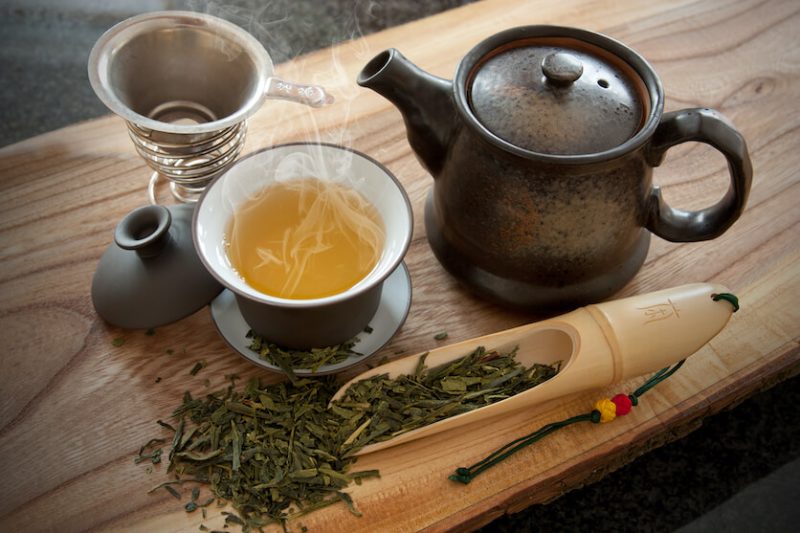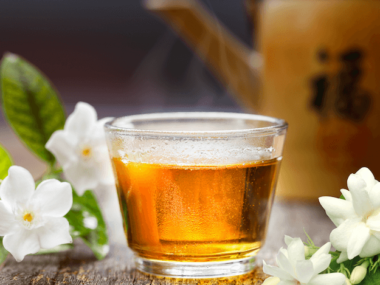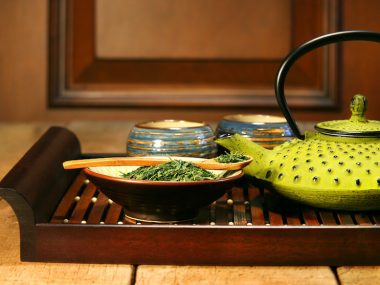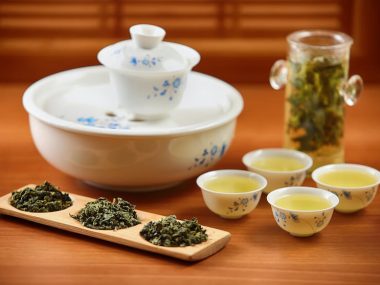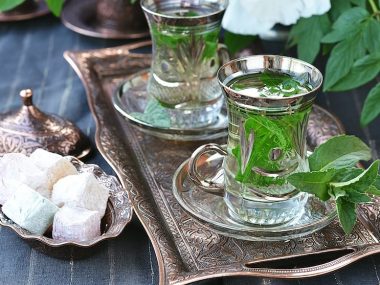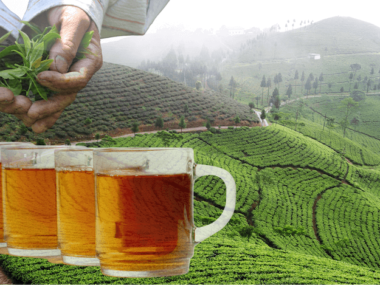You’ve been missing out on a phenomenal accompaniment to those Chinese takeouts and lunchtime sushi meals. Who knew that the twigs of a plant could be transformed into a cup of utter bliss? Learn about the magnificent bancha tea.
Table of Contents
What Is Bancha Tea?
“Bancha” (Bancha green tea) is a term used to categorize types of green tea from Japan. Understanding the terminology and classification of Asian teas is challenging. For the sake of simplicity, we start with the fact that Bancha is a green tea cultivated and processed in the Kyoto region of Japan.
In and around the Kyoto region, there are tea growers who produce teas such as Sencha and Bancha from the same tea plant (Camellia sinensis.) You are probably wondering how this is possible. Two different teas from one plant? It depends on when the tea leaves are harvested and what part of the tea plant the tea leaves are plucked from.
For Sencha, a tea grower harvests young, tender tea leaves early in the year. These tea leaves are plucked from the upper portion of the tea plant, leaving the lower leaves intact. Late in the year, the lower tea leaves are harvested to produce Bancha. These tea leaves will be large and coarse because they have been on the tea plant much longer. This intentional harvesting method allows tea growers to produce two teas: Sencha and Bancha.
Origins of Bancha
A long time ago, tea was considered a luxury for the affluent. To provide an affordable tea for the “commoner,” tea growers harvested remaining tea leaves that were otherwise deemed unfit for tea by the upper class. Some would go as far as describing tea leaves used to produce Bancha as “scrappy” or “leftovers” because the tea leaves are considered lower grade.
Over time, Bancha became a very common go-to green tea consumed all over Japan. The modern tea cultivation and processing industries perfected tea growing which brought a scrappy, low-grade tea into the mainstream of the tea-drinking community. Many Japanese think of Bancha tea as an everyday tea to enjoy.
Other types of Japanese tea either have a base of Bancha or is Bancha that has undergone further processing (roasting) to create another tea such as Hojicha and Genmaicha.
What Does Bancha Tea Taste Like?
Bancha is a rather mild-tasting green tea because it is made from more mature tea leaves. As with most green teas, there’s an element of earthy, grassy, popcorn, umami present. Hints of toasty notes make it highly enjoyable.
There are varying opinions on the taste of Bancha tea. Some claim it to be slightly vegetal with a nutty finish. Others say it’s quite bland compared to the robust black tea they are accustomed to drinking.
Why not try a cup of it and let your palette decide on the flavors you detect? Everyone perceives this tea’s taste in unique ways.
Is There Caffeine In Bancha?
Bancha tea does contain caffeine because it comes from the tea plant (Camellia sinensis.) True teas (black, green, oolong, yellow and white) are the only teas that contain caffeine. These teas are all made from the tea leaves of the same tea plant. What sets each apart from one another is how they are cultivated, harvested, and processed. Some may contain more caffeine than others.
A typical six-ounce cup of any tea can yield up to 40 mg of caffeine. However,
Bancha is made from mature tea leaves, which are much lower in caffeine. So, how low is caffeine in Bancha green tea? Let’s take a look at some interesting research on Bancha’s constituents.
A research study entitled “Screening and Purification of Catechins From Underutilized Tea Plants and Their Bioactivity Studies” notes the various levels of phenols (tea constituents which also include caffeine) decrease with the age of tea leaves. New tea buds contain the highest amount of caffeine (29 mg) and phenols (74 mg), whereas mature tea leaves contain about 50% less caffeine (14 mg) and 19% fewer phenols (61 mg.) So, you can expect to have about 10-14 mg of caffeine in a six-ounce cup of Bancha tea.
What Is The Difference Between Sencha And Bancha Tea?
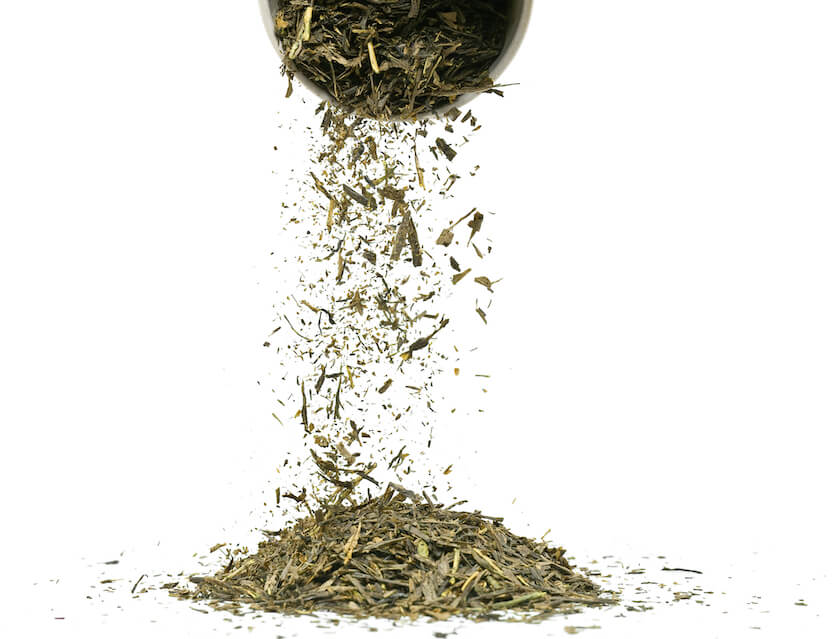
Sencha and Bancha tea leaves come from the same tea plant growing on a tea farm. Unless you are familiar with how these two types of green tea are cultivated, harvested, and processed, it can be very confusing trying to figure out how this is possible. Just how do two different teas come from the same physical tea plant?
Let’s imagine a tea farm with tea plants sprawled out. Those tea plants are being cultivated by a tea grower who produces Sencha and Bancha tea. The tea grower carefully times each harvest. Moreover, the tea plants are shaded for several weeks before the harvest. This shading is done for the harvests that produce Sencha. Shading causes a shift in chlorophyll in the leaves, making them sweeter.
Early and mid-summer harvests are planned for Sencha. Tea pickers only pick the upper tea leaves on each tea plant, leaving the lower tea leaves intact to come back later and harvest for Bancha. By the time the tea leaves are harvested for Bancha, those tea leaves are large and quite coarse and brittle. These leaves have fewer health benefits, and less caffeine than the first harvest of younger tender leaves picked for Sencha.
Sencha Tea
- Shading of the plants is done several weeks before harvest.
- Harvests: early and late Spring, early summer
- Plant Parts Harvested: tender, young tea leaves on the upper portion of the tea plant
- Taste: sweet, grassy, earthy, seaweed
- Caffeine: highest
- Phenols: highest
Bancha Tea
- No shading is done before harvest.
- Harvests: late summer/early Autumn
- Plant Parts Harvested: lower portion of the tea plant (stems, mature leaves)
- Taste: toasty, umami, popcorn, nutty
- Caffeine: lowest
- Phenols: lowest
Bancha Tea Benefits
Bancha tea provides those with caffeine sensitivities a lower caffeine alternative. This tea is often enjoyed as an evening tea by the Japanese because it is so low in caffeine.
What Is Bancha Tea Good For?
According to a study done (“Tea and Health: Studies in Humans”), Bancha tea helps to reduce cardiovascular disorders, optimizes metabolism, which reduces the risk of diabetes, helps in weight loss, relieves pain associated with chronic inflammation while also fighting inflammatory conditions. This tea also lowers the risk of dementia, Parkinson’s, and Alzheimer’s disease.
Side Effects
As for any side effects associated with drinking Bancha tea, a research study entitled “Beneficial Effects of Green Tea: A Literature Review”) mentions green tea may cause unpleasant side effects if you have any heart disorder, renal condition, are pregnant/nursing, are taking medication, or have consumed too much of the tea. So enjoy it in moderation.
How To Brew Bancha Tea
Bancha tea should be enjoyed to its fullest, so we have a traditional way to brew this tea. By preparing tea in this manner, you’ll find that the art of making your tea and drinking it carves out a space of time for you to relax and just have a few moments to ponder life. Sometimes we need this, especially when our busy lives consume most of our waking hours.
Teaware You Will Need
Ingredients
(serving size 1 person)
- 2 cups of water
- 6 teaspoons of loose leaf Bancha tea
Directions
- Measure and place the loose leaf tea into the Kyusa (teapot.)
- Pour the water into a kettle.
- Bring the water to a boil.
- Remove from the heat.
- Pour the hot water into the Kyusa.
- Place cover on and allow it to steep for 30 seconds.
- Pour the tea into the Chawan (teacup.)
Tip: If you are not a fan of having particles of steeped tea in your cup, place a strainer over your teacup as you pour the tea.
What Pairs Well With Bancha Tea?
Bancha tea is a wonderful tea to enjoy with sushi and dishes prepared with soy sauce. This tea’s subtle vegetal taste makes it highly versatile in pairing with almost any Japanese or Chinese food. Something to keep in mind when pairing Bancha with foods is it’s more of an entree beverage than something to drink with sweet dessert foods. The exception is cookies or cakes made with Matcha tea.
Enjoy The Best Of Bancha!
Bancha is an exceptional tea that compliments a quiet evening by the fire or an afternoon treat. Being one of the lowest caffeinated teas, you can confidently have a cup before bed or with that takeout from your local Chinese restaurant. You may discover a love for this tea. Before you know it, it’s your go-to tea for late afternoons and evenings!
